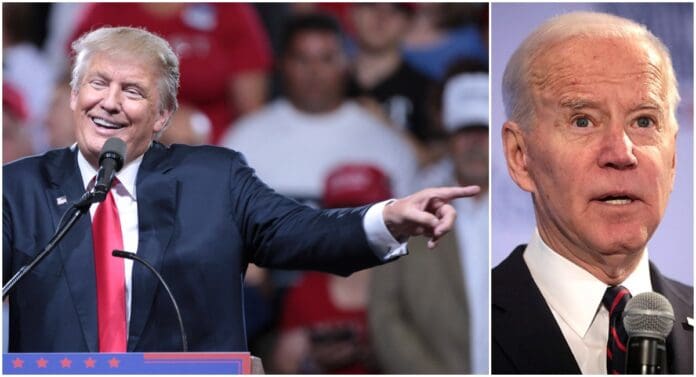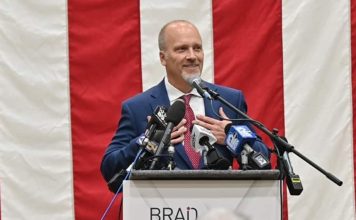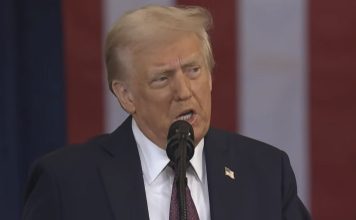“The $2.4 trillion BBBA – before the U.S. Senate this week – would increase taxes on the middle- and working-class by up to 40%.”
Democrats have argued that the tax reforms implemented through the 2017 Tax Cuts and Jobs Act (TCJA) only benefited the rich, and that the Build Back Better Act will help middle-and working-class Americans the most.
But several nonpartisan groups found that the TCJA reduced the tax burden for the middle- and working-class by up to 87% and, they argue, the $2.4 trillion Build Back Better Act – before the U.S. Senate this week – would increase taxes on the middle- and working-class by up to 40%.
A new analysis published by the Heartland Institute found that the TCJA reduced the average effective income tax rates for taxpayers in every income tax bracket – but the lower- and middle-class saw the greatest benefits – with the lowest-income filers receiving the largest tax cuts.
The poorest Americans, with adjusted gross income of between $5,000 and $10,000, paid 87.65% less in taxes as a result of the Republican-passed TCJA. Whereas their wealthier counterparts, reporting an adjusted gross income of between $5 million and $10 million, paid 3.5% less in taxes.
IRS data also show that middle- and working-class Americans received tax cuts of between 11% and 88% in 2018, at least double that of wealthier taxpayers, with those making between $500,000 and $1 million receiving single-digit cuts.
Filers with an adjusted gross income of between $30,000 and $40,000 paid roughly 18.41% less; those with incomes between $40,000 to $50,000 paid 18.2% less; and those with $50,000 to $75,000 in income paid roughly 17% less, according to 2018 IRS data analyzed.
“Based on tax data from 2017 and 2018, the Tax Cuts and Jobs Act reduced taxes for the vast majority of filers, led to substantial improvements in upward economic mobility, and disproportionately benefited working- and middle-class households, many of which experienced tax cuts topping 18 percent to 20 percent,” the Heartland Institute reports.
Paying less in taxes also improved lower- and middle-income Americans’ standard of living and upward mobility, the institute found, meaning more moved out of poverty, according to IRS data.
The number of those in the lowest income bracket with an adjusted gross income of $1,000 to $25,000 decreased by more than 2 million filers in one year. Households that reported incomes greater than $25,000 increased in every single income bracket over the same year.
The greatest increase in the number of filers was in the $100,000 to $200,000 income bracket, with more than 1 million additional filers in 2018 than in 2017.
While Democrats continue to claim that the TCJA gave tax breaks to the rich, IRS data show that higher-income earners paid more in taxes in 2018 than they did in 2017.
For example, those who reported income of $500,000 or more in 2017 paid 38.9% of all personal income tax revenues; in 2018, their share of taxes accounted for 41.5%.
The Washington, D.C.,-based nonprofit Tax Foundation explains among other things that the TCJA reformed the individual income tax code by lowering tax rates on wages, investment and business income, broadened the tax base, and simplified the tax code. It also significantly lowered the corporate income tax rate to 21% and “moved the United States from a worldwide to a territorial system of taxation.”
The financial gains seen by lower-earning Americans resulting from the TCJA could be erased if the Democrats’ Build Back Better Act were passed, several analyses show.
The Tax Policy Center found that “taking into account all major tax provisions, roughly 20 percent to 30 percent of middle-income households would pay more in taxes in 2022” as a result of the Build Back Better Act tax changes.
Build Back Better Act
President Joe Biden pledged during his campaign to not increase taxes on those earning less than $400,000 a year. But the Tax Policy Center notes that this wouldn’t be the case and many households would again pay higher taxes in 2023 than in 2022.
Likewise, the Build Back Better Act would also “shrink the average 2023 tax cuts for low-income households, raise taxes slightly for moderate-income households, and increase taxes significantly for the highest-income households,” the center notes.
The Tax Foundation estimates that the House version of the Build Back Better Act “would reduce long-run economic output by nearly 0.5 percent and eliminate about 125,000 full-time equivalent jobs in the United States. It would also reduce average after-tax incomes for taxpayers across every income quintile over the long run.”
Democratic changes to SALT (state and local tax0 deductions would also “provide little or no benefit for low and middle-income households but [would] generate a substantial tax windfall for those with much higher incomes,” the Tax Policy Center calculates.
And the Center on Budget and Policy Priorities argues the Democrats’ SALT deduction changes don’t qualify as “middle-class tax relief.”
“There’s no way to justify these tax cuts as ‘middle-class’ tax relief,” it said. “They are particularly egregious given that BBB aims to provide the most help for low- and middle-income households while reducing tax advantages for wealthy households.”
Bethany Blankley | The Center Square contributor
Go to Source
Reposted with permission
Table of Contents











![WATCH: Elon Musk Town Hall Rally in Green Bay [FULL Video]](https://www.wisconsinrightnow.com/wp-content/uploads/2022/04/Elon_Musk_3018710552-356x220.jpg)



![The Wisconsin DOJ’s ‘Unlawful’ Lawman [WRN Voices] josh kaul](https://www.wisconsinrightnow.com/wp-content/uploads/2025/03/MixCollage-29-Mar-2025-08-48-PM-2468-356x220.jpg)







![Phil Gramm’s Letter to Wall Street Journal [Up Against the Wall]](https://www.wisconsinrightnow.com/wp-content/uploads/2025/03/gramm-356x220.png)










